In this blog post, Anumeha Saxena, a student, currently pursuing a Diploma in Entrepreneurship Administration and Business Laws from NUJS, Kolkata, discusses the setting up of a Special Economic Zone in the form of free trade and warehousing.
Defining Special Economic Zones
Essentially, a Special Economic Zone is a demarcated and duty-free geographical region which has economic regulation different from the country in which it is situated, sometimes even deemed as a foreign territory. The tax and business incentives extended in these regions are expected to promote rapid economic growth attracting both foreign investment as well as know-how.
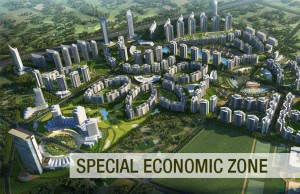 The policy framework to provide internationally competitive platform for exports, the Government of India had introduced the SEZ Policy in April, 2000, which functioned from 2000 to 2006 through the provisions of the Exim Policy/Foreign Trade Policy and fiscal incentives but did not garner sufficient confidence of the investors to commit substantial investment for development of infrastructure and setting up of units for export of goods and services. To create a stable policy with minimal regulation and an expeditious single-window clearance, the Special Economic Zones Act, 2005 was enacted laying down the policy framework, and the Rules notified to provide the supporting procedure. It is expected to generate an increase in exports and garner FDI capitalising on public-private partnership.
The policy framework to provide internationally competitive platform for exports, the Government of India had introduced the SEZ Policy in April, 2000, which functioned from 2000 to 2006 through the provisions of the Exim Policy/Foreign Trade Policy and fiscal incentives but did not garner sufficient confidence of the investors to commit substantial investment for development of infrastructure and setting up of units for export of goods and services. To create a stable policy with minimal regulation and an expeditious single-window clearance, the Special Economic Zones Act, 2005 was enacted laying down the policy framework, and the Rules notified to provide the supporting procedure. It is expected to generate an increase in exports and garner FDI capitalising on public-private partnership.
Significant incentives available include exemption from customs and excise duties for development of SEZs for authorised operations, exemption from income tax, minimum alternate tax, dividend distribution tax, central sales tax and service tax. Additionally, special additional duty is exempted on goods cleared from FTWZ and brought into the DTA. The notification provides that exemption is not available if such goods are exempt from payment of sales tax/VAT when sold in DTA.[1] Needless to mention, these also boost the employment in the region and increase the competitiveness of industries.
The Ministry of Commerce and Industry is the nodal authority that governs the setting up and administering of the SEZs. Inter alia, it covers the aspects of the constitution of authorities and bodies for regulating the SEZ and SEZ units, the permissible services and manufacturing activities in SEZs, criteria and procedure for setting up of SEZs and SEZ units, and obligations on their part.
A SEZ can be setup by either Central or State Government or both of them jointly, for manufacturing goods or rendering services or as a free trade and warehousing zone. While the definition of manufacturing and services have been provided in the Act, a discussion of the same is beyond the scope of this paper. It is the third kind of SEZs, those concerned with free trade and warehousing that form the subject of the paper. Simply put, these SEZ mean those wherein trading and warehousing and other activities related thereto are carried out.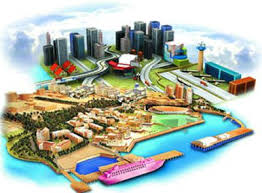
A SEZ is also divided into processing and non-processing area. The processing area is that area in a SEZ where units can be located for the manufacture of goods or rendering of services. The Free Trade and Warehousing Zone can be set up only in the processing area of a multi-product SEZ. It is demarcated from a non-processing area by the Development Commissioner, where the non-processing area is one intended to provide support facilities to the SEZ processing area activities and may include commercial and social infrastructure. The entry and exit points of processing area and FTWZ are specified and have to be fully secured by taking such measures as approved by Board of Approval.[2]
Compliance for the establishment of SEZ includes following the multiple requirements laid down by different instructions issued by the Department of Commerce. Further, environmental clearance has to be obtained from the Ministry of Environment and Forest.
It is important to note that while SEZs can have a business, residential or recreational facilities located in the processing area to support the processing area activities, such activities require prior authorization of the Board of Approval. Only those authorised activities as approved by the BOA are eligible for exemptions. However, the exemption is not available for operation and maintenance of facilities in the non-processing area.[3]
As the Foreign Trade Policy for years 2015-20, the objective of the creation of such zones is to create the trade-related infrastructure to facilitate the import and export of goods and services with freedom to initiate trade transactions in free currency.
Defining Free Trade and Warehousing Zones
The Government had announced in the Foreign Trade Policy, 2004-09 its intent to establish Free Trade and Warehousing Zones to facilitate trade-related infrastructure to promote import and export of goods and services with freedom to carry out trade transactions in free currency. On June 23, 2005, the central legislature passed the Special Economic Zones Act, 2005 and on February 10, 2006, Government of India enacted the SEZ Rules, 2006.
Designated as foreign territory for carrying on business, the FTWZ are to facilitate trade. The Policy seeks to establish “world-class infrastructure for warehousing of various products, state-of-the-art equipment, transportation and handling facilities, commercial office space, water, power, communications and connectivity, with a one-stop clearance of import and export formality, to support the integrated Zones as ‘international trading hubs’. These Zones would be established in areas proximate to seaports, airports or dry ports so as to offer easy access by rail and road.”[4]
The zones are to provide world-class infrastructure for warehousing for numerous kinds of products, handling and transportation equipment, commercial office space, related utilities-telecom, power, water, etc., and further, one-stop clearance of import and export of goods.[5] 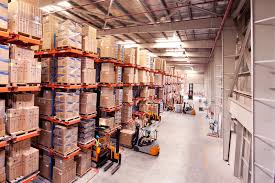
The facilities are expected to include customised and categorised warehouses for different kinds of products-chemicals, foods, electronics, oil, etc., sophisticated freezer/cooler facilities, break bulk, containerized and dry cargo storage facilities, controlled humidity warehouses, enhanced transportation facilities, information systems for cargo tracking, office space and support facilities and amenities like medical facility, canteen services, business centres.[6]
Additionally, FTWZ fashion themselves to include administrative buildings and offices, ancillary building, canteen, services building, covered parking and roads. Security huts, container stacking area pavement, in-plant maintenance workshops, general high mast lighting are also included. Horticulture and landscaping, as well as boundary wall, water supply and sewerage mechanisms, are covered as well. Rainwater and stormwater drainage, effluents disposal systems, telecom cables, power supply systems are included as well.
When assessing the viability of an FTWZ, the BoA will look at whether it acts as a suitable logistics and distribution centre enabling trade facilitation and logistics operations, as well as free trade environment.[7]
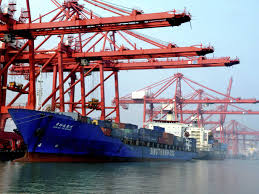 There is certain procedure common to the establishment of all SEZ, whereas there are certain others which are specific to the establishment of FTWZ. Both have been highlighted below. 100 percent FDI is permitted in development and establishment of FTWZ and their infrastructural facilities. As it is deemed to be a foreign territory, all equipment and material sourced from the Domestic Tariff Area will be considered imports from FTWZ and vice versa. At the same time, all benefits available to SEZs shall apply to FTWZ. The FTWZ is under the direct administrative control of the Development Commissioner.
There is certain procedure common to the establishment of all SEZ, whereas there are certain others which are specific to the establishment of FTWZ. Both have been highlighted below. 100 percent FDI is permitted in development and establishment of FTWZ and their infrastructural facilities. As it is deemed to be a foreign territory, all equipment and material sourced from the Domestic Tariff Area will be considered imports from FTWZ and vice versa. At the same time, all benefits available to SEZs shall apply to FTWZ. The FTWZ is under the direct administrative control of the Development Commissioner.
The benefits accruing to FTWZ include deferment of customs duty for product requiring longer storage time. Income tax and service tax exemptions for developers and users of the zone. Excise duty exemption for products sourced from domestic markets, including goods, spares, DG sets, packing materials, etc.
FTWZ provide infrastructure benefits in the form of single-product storage facilities that assist in meeting specific warehousing requirement for each product category. Further, they make available temporary storage facilities to enable users to meet short demand without incurring significant costs, e.g., leasing space for a year to meet 2-3 months demand. Shared equipment which augments the ability of users to save capital investments by leasing the equipment provided by the zone. Administrative benefits include the reduction in customs clearance time and better logistics and connectivity leading to improved delivery time. Support facilities such as banking, insurance along with efficient management services are also extended.
Procedure
A SEZ can be set up by the Central or State Government, the public or private sector including a foreign company or jointly in the form of a consortium. The steps involved in the establishment of a SEZ can be enumerated as follows: a developer intending to set up a SEZ must identify the category of SEZ he intends to apply for, the area for setting up the SEZ needs to be identified, and must not be less than the minimum area indicated in the law.
 The proposals can be made by public sector undertakings, public limited companies or by joint ventures in technical collaboration with experienced infrastructure developers. Board of Approval considers These in Department of Commerce. On approval, developer issues a letter of permission for the development, operation and maintenance of FTWZ.
The proposals can be made by public sector undertakings, public limited companies or by joint ventures in technical collaboration with experienced infrastructure developers. Board of Approval considers These in Department of Commerce. On approval, developer issues a letter of permission for the development, operation and maintenance of FTWZ.
The proposal for the development of FTWZ is required to necessarily entail a minimum outlay of Rupees 100 crores for creation and development of infrastructure facilities, with a minimum built-up area of five lakh square metres.[8]
As per Rule 5(2), SEZs for Free Trade and Warehousing shall have an area of 40 hectares (even for special states) or more with a built up area of not less than one lakh square metres, provided that in a standalone Free Trade and Warehousing Zone, at least fifty percent of the area shall be earmarked for developing processing area. Additionally, a Free Trade and Warehousing Zone may also be set up as part of a Special Economic Zone for multi-product. Further, a SEZ for a specific sector, Free Trade and Warehousing Zone may be permitted with no minimum area requirement but subject to the condition that the maximum area of such Free Trade and Warehousing Zone shall not exceed twenty percent of the processing area. Paved and walled area and the container yard, do not form part of the built-up area, and the Free Trade and Warehousing Zone can be developed in phases.[9]
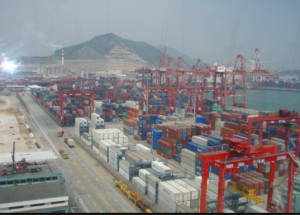 On identification of the area, an application for establishment of SEZ is made to the concerned State Government as per the format set out in Form A. If the land is owned by the developer or has already been leased for a period in excess of 20 years by the developer, details of same can also be filed along with the application. The application must necessarily contain a project report along with other particulars. The reports covers points such as: location of the SEZ along with the existing and proposed infrastructure, distance from nearest means of transport: rail, road, seaport and airport, financial details including proposed investment, mode of financing and viability of the project, details of foreign equity and repatriation of dividends, whether the SEZ intends to be multi-product or otherwise. This is subjected to the scrutiny of the Board to determine whether the criteria for setting up the SEZ are fulfilled.
On identification of the area, an application for establishment of SEZ is made to the concerned State Government as per the format set out in Form A. If the land is owned by the developer or has already been leased for a period in excess of 20 years by the developer, details of same can also be filed along with the application. The application must necessarily contain a project report along with other particulars. The reports covers points such as: location of the SEZ along with the existing and proposed infrastructure, distance from nearest means of transport: rail, road, seaport and airport, financial details including proposed investment, mode of financing and viability of the project, details of foreign equity and repatriation of dividends, whether the SEZ intends to be multi-product or otherwise. This is subjected to the scrutiny of the Board to determine whether the criteria for setting up the SEZ are fulfilled.
The State Government, when recommending the proposal, commits to the provision of facilities and incentives such as exemption from state and local levies, exemption from electricity duty, single-window clearance under state laws, etc.[10]
It is also required to forward the proposal along with recommendation within 45 days from the date of receipt of a proposal to Board of Approval, addressed to Deputy Secretary (SEZ), Department of Commerce, who the applicant may also approach directly, which will be contingent on the applicant obtaining the concurrence of the State Government. However, in the latter scenario on receiving approval, the applicant is required to intimate the State Government within 6 months.
On being issued a letter of approval from the Department of Commerce, and clarification from the State Government or its authorised agency regarding the legal possession and irrevocable right, the Department notifies the area as a SEZ. To this end, the applicant is required to submit the details of operations proposed to be undertaken in the SEZ; without the authorization, the benefits shall not be extended to the applicant. A State Government intending to set up a SEZ can directly forward the application to the Board after identification of the area. The Central Government, on the other hand, can notify such a Zone, without any application being made to the Board or reference to the State Government.
The grant of approval by the BoA can be with or without modification or may lead to an altogether rejection. In the former case, the same is communicated to the person or State Government concerned, and if accepted, the same are communicated to the Central Government. If the proposal is accepted without modifications, then this is communicated to the Central Government. In each of these two cases, the Central Government then grants a Letter of Approval on terms and conditions approved by the Board of Approval to the developer i.e. any person or State Government. If the proposal stands rejected, then the applicant is given an opportunity to be heard before cancellation and the reasons for the same recorded and communicated to the Central Government which communicates to the State Government or person concerned. It may also accord in-principle approval pending land acquisition. Issuance of Letter of Approval by the Government of India is carried out in the format that is provided in Form B.
This letter is valid for 3 years within which time the applicant has to implement the proposal and start operations. However, the Board may grant a further extension for up to 2 years on a case-by-case basis.
After obtaining the Letter, the unit may take possession of the land/built-up space and execute a bond-cum-legal undertaking jointly with the Development Commissioner and Specified Officer as given in Form H of SEZ Rules and commence operations thereafter.
An entrepreneur holding letter of approval issued under sub-rule (1) of Rule 19 will be entitled to set up a unit in processing area of the SEZ or FTWZ provided that a proposal for setting up of a unit in a SEZ or FTWZ will be entertained only after processing area of SEZ or FTWZ has been demarcated under Rule 11.
Following guidelines issued by Department of Commerce will apply in cases where: the request for extension is filed before a LoA has expired and where steps for implementation of a proposal like acquisition/ purchase of land etc. have been taken.
The Letter of Approval may be extended for 1 more year beyond the original validity. While extending the in-principle LoAs, any approval provided for an area more than 5000 hectares may be capped at 5000 hectares to align all such approvals as per the Government decision in this regard. However, a standalone FTWZ cannot be granted a second extension. Further, with respect to specific product SEZs other than notable exceptions such as biotechnology and non-conventional sources of energy, conditions for grant of the first extension will be applicable. Additionally, the developer must have 60 percent land acquisition/ possession. In the case of multi-product SEZs, conditions for grant of extension are to be fulfilled. Further, the developer must have 50 percent land acquisition/ possession.[11]
To establish a SEZ unit, copies of project proposal are required to be submitted to the Development Commissioner who forwards the same to Approval Committee which consists of Development Commissioners, Officers from State and Central Government and also a representative of the Developer as a Special Invitee. A consolidated application form may be submitted for certain projects.
Proposals for setting up units in SEZs other than those necessitating an industrial licence may be approved by Development Commissioner within 15 days. In SEZs requiring an industrial licence, it may be approved by Development Commissioner after clearance of proposal by the Board and Department of Industrial Policy and Promotion within 45 days. This approval is valid for 5 years. The Approval Committee, however, is empowered to cancel approval granted to SEZ Unit. A challenge to the order of Approval Committee regarding the grant of approval to the SEZ Unit can be made before Board of Approval within 45 days of such intimation. The Development Commissioner can give possession of the relevant space in SEZ only post-issue of the Letter.[12]
Procurement of goods for the development of SEZ for authorised operations shall be approved by the Approval Committee at a zonal level on the basis of which goods can be procured without payment of customs and excise duty by the developer.
With respect of FTWZs, it is important to note that supplies to bonded warehouses and FTWZs by SEZ units where payment is received in foreign exchange are counted towards fulfilment of positive net foreign earnings. In such cases, receipt of foreign exchange is necessary. Sub-contracting of production or production process are not permitted in FTWZ as they are involved only in free trade or warehousing.[13]
In an FTWZ, the developer shall be permitted to import duty-free such building materials and equipment as required for development and infrastructure of the zone. This material as sourced from DTA are considered to be physical exports for the DTA suppliers. The scheme provides for duty-free import of all goods (except prohibited items, arms and ammunition, hazardous wastes and SCOMET items for warehousing). The same provisions govern Bond towards customs duty on import as that for other SEZs. These goods can be re-sold/re-invoiced or re-exported (which is permitted without any restrictions).[14] Selling of these goods in the DTA is also provided for under the provisions of the Policy. Packing or repacking minus processing and labelling as per customer or marketing requirements are allowed to be undertaken within the FTWZ.[15] Once developed, the developer is permitted to sale/lease/rent out warehouses/workshops/office space and other facilities in the FTWZ to traders/ exporters.
Post the establishment, the developer shall itself or through suitable special purpose arrangements, ensure a reliable mechanism for proper maintenance of common facilities and security of the FTWZ. When functioning, the maximum period for which the goods are allowed to be warehoused within the FTWZ is two years, after which they are to be necessarily re-exported or sold in the DTA. Further, after the expiry of this period, customs duties as applicable become automatically due unless goods are re-exported within such grace period as is allowed but cannot exceed three months.[16]
Units in FTWZs are required to be net foreign exchange earners. These earnings are calculated cumulatively for a very block of five years from the commencement of warehousing and trading operations as per the formula applicable to SEZ units.
References:
[1] Available at <http://www.kpmg.com/IN/en/services/Tax/FlashNews/Recent-developments-in-SEZ-and-EOU-schemes.pdf>, (Last visited on October 28, 2016). The Circular also provides that such an exemption is not available on goods cleared on the stock-transfer basis or for self-consumption.
[2] Rule 11(2), SEZ Act, 2005.
[3] Details of such activities which can be approved as authorised activities in non-processing areas are given in the Ministry of Commerce Industry Notification dated October 27, 2006. Activities which the definition of manufacturing as well as services has default approval are noted in the Ministry of Commerce & Industry Circular No. F.1/153/2007-SEZ dated August 22, 2008.
[4] Chapter 7A, Foreign Trade Policy, 2015-20.
[5] Free Trade and Warehousing Zones, available at < http://www.ilfsindia.com/downloads/bus_concept/ftwz.pdf>, (last visited on October 29, 2016).
[6] Id.
[7] Id.
[8] Chapter 7A, Foreign Trade Policy, 2015-2020.
[9] Rule 5, SEZ Rules, 2006.
[10] Rule 4(5), SEZ Rules, 2006.
[11] Instruction of the Department of Commerce, available at <http://www.epces.in/uploads/files/file/faq.pdf instruction 22>, (last visited on October 30, 2016).
[12] Special Economic Zones: Reinforcing Investors’ Interest, available at <http://www.mondaq.com/india/x/303448/Inward+Foreign+Investment/Special+Economic+Zones+Reinforcing+Investors+Interest>, (last visited on October 30, 2016).
[13] Rule 41(1) (g), SEZ Rules, 2006.
[14] However, export of SCOMET items is not allowed except with the permission of Inter-Ministerial Committee.
[15] Chapter 7A, Foreign Trade Policy, 2015-2020.
[16] Chapter 7A, Foreign Trade Policy, 2015-2020.
 Serato DJ Crack 2025Serato DJ PRO Crack
Serato DJ Crack 2025Serato DJ PRO Crack


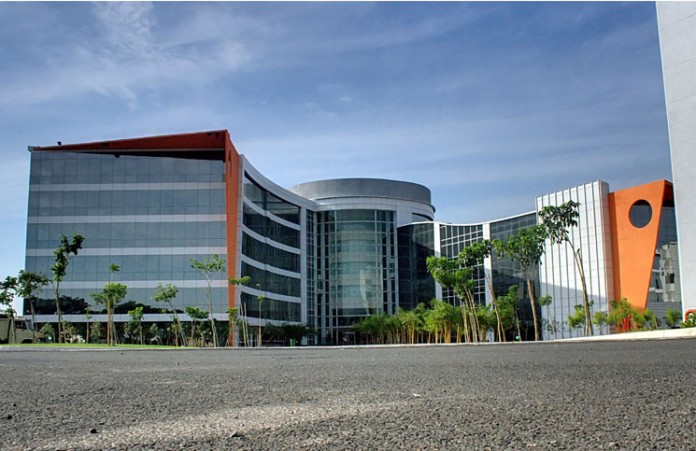





 Allow notifications
Allow notifications




What will be the average cost of setting up a FTWZ in India Bangalore?